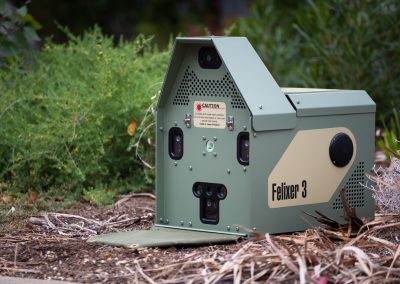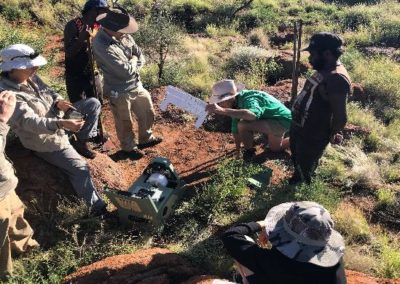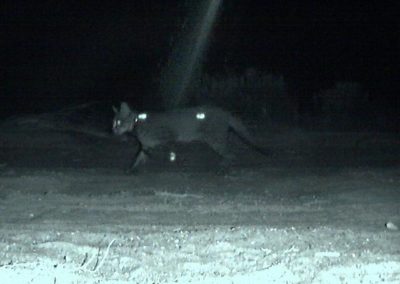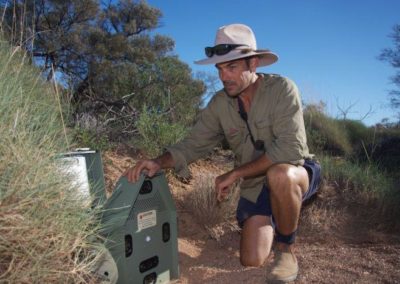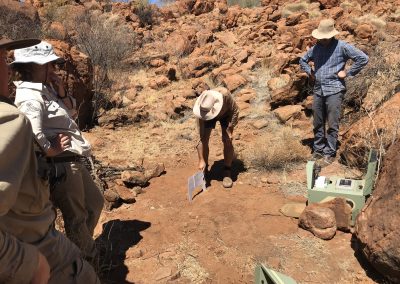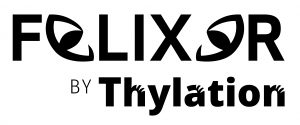Felixer FAQs
Background
Felixers were developed and patented with assistance from several NGOs and Government grants as a novel, humane and automated tool to help control and reduce the number of feral cats and foxes, and thus improve the welfare of native animals. Grant reports, research papers, and our partners can be found on the Resources tab.
Felixers use rangefinder sensors to distinguish target cats and foxes from non-target wildlife and humans, and spray targets with a measured dose of toxic 1080 gel. The solar-powered Felixer which can hold 20 sealed cartridges, resets automatically after firing. Felixers photograph all animals detected (including non-targets that are not fired upon) and can be programmed to play a variety of audio lures to attract feral cats and foxes. A choice of software settings control the sensitivity and likelihood of firing on target cats and foxes.
A camera based Artificial Intelligence (AI) system working in tandem with the four Lidars now offers an enhanced target detection capability that is being implemented in our new batch of V3.2 Felixers are available for lease from November 2022. Contact us for a quote.
Why do feral cats require control?
In environments like Australia and many islands where cats aren’t native, feral cats can have a devastating effect on naïve wildlife. Cats have driven many mammals and some birds to extinction and potentially threaten a further 74 mammals, 40 birds, 21 reptiles and 4 amphibians in Australia. Outdoor cats also transmit diseases to humans and wildlife. Further information on the threats of feral cats and control options is available from the Resources page.
Why develop a grooming trap for feral cats?
Although feral cats are often reluctant to take baits or enter traps, they instinctively and fastidiously groom. Toxin delivery through grooming has advantages over conventional traps because the feral cat does not need to be restrained and ‘traps’ don’t need to be frequently checked and rebaited. Recognising the need and opportunity for grooming-based cat control is a ‘very high priority’ of the Australian Government Threat Abatement Plan for Predation by Feral Cats.
Do Felixers affect other carnivores?
Most Australian native carnivores (including quolls) are too small to activate Felixers although the larger Tasmanian devil does activate Felixers on occasions. Felixer sensors were specifically placed to safeguard adult dingoes and packs have been maintained in areas where Felixers have been deployed for several years. However, dingo pups could be targeted and if they groom would be at risk from Felixers. Therefore, Felixers may need to be deactivated in whelping season where maintenance of dingo populations is important. Felixers effectively target foxes and enabled control in pen experiments and limited field trials, but further research is needed to confirm or optimise efficacy at fox control. Felixers are considered a more humane method of controlling feral cats due to their target-specificity (much lower likelihood of negative effects on non-target native species) enabling a high dose of 1080 toxin to cause more rapid death.
The new V3.2 Felixer with Artificial Intelligence, available for lease from 1 October 2022, has been developed to minimise false positive targeting of native and/or endangered species. Its discriminatory power will continue to improve through ‘machine learning’ as more images and species are uploaded and classified in the Felixer Management System, enabling the release of updated software versions.
What conditions are required to trial or operate Felixers?
Use of agricultural chemicals, including toxins, in Australia is governed by the Australian Pesticide and Medical Veterinary Authority (APVMA). Because Felixers use a new technique to administer toxins, all use of Felixers armed with toxin must currently be covered under a restricted use APVMA research permit, which provides deployment, signage and reporting requirements. New trial sites can be approved by State or regional biosecurity officers, who also administer State-specific poisons regulations. Thylation are expecting Felixer Cartridges to be registered by APVMA before 31 December 2022. which should enable more widespread use, albeit with similar safety and deployment conditions. All Felixer Users should complete the Felixer Training Accreditation to ensure optimal deployment and performance and must do so prior to being issued toxic cartridges.
Where are Felixers currently being trialled?
Field trials of Felixers have been underway since 2015 and are currently operating in all Australian States and Territories, protecting threatened species including bilbies, bettongs, rock wallabies, quolls, malleefowl, ground parrots, numbats and rare dunnarts and rodents. Some of these trials are in photo-only mode whilst permission for loading with toxins is received. Trials have been conducted or supported by 6 government environment bodies, 4 environmental NGOs, 4 indigenous ranger groups and 5 mining companies.
How are data accessed and analysed?
Felixers record detailed sensor logs and a photograph every time their sensors are intercepted,. Data recorded include, whether the Felixer was set in photo-only or live fire mode, whether the object detected was considered a target and key attributes (date, time, battery power, lure played, detailed sensor activation, temperature) that are used for analyses, diagnostics and performance optimisation. Data are uploaded from a USB to the cloud-based Felixer Management System with secure access provided to Project site managers and the Felixer management team. Animals are classified according to the nomenclature used by the Atlas of Living Australia (ALA) and animal records can be seamlessly uploaded to the ALA to benefit conservation planning and management. Felixer data are also used to compile site-based statistics and overall performance and target specificity information for the national trial. Felixers therefore operate as both a management tool and a sophisticated camera trap monitoring device.
Trial results?
Results from the most comprehensive trials conducted to date suggest that Felixers provide a target specific and safe tool for feral cat management in many Australian habitats as summarised in a scientific paper published by Wildlife Society Bulletin. The first comprehensive efficacy trial conducted at Arid Recovery successfully targeted 72 cats (but no bilbies, birds, quolls, rabbits, bettongs and only one non-target kangaroo) and detected a 66% reduction in feral cat activity within 2 months. Updates from other trials are posted on this website under the Resources tab.
Are Felixers perfect?
Because the oldest Felixers have only been in the field for 7 years and Thylation have redesigned later units to take advantage of new technology or fix earlier ‘bugs’, we continue to face the inevitable challenges of deploying sophisticated equipment in field settings. Early Felixer adopters are assisting with the continuous improvement of these devices and occasionally experience glitches that require troubleshooting advice or software upgrades, or occasionally a trip back to the engineering workshop for diagnosis and repair. Felixers work best when installed inconspicuously to not change the behaviour of feral cats as they are triggered by a feral cat walking past at a natural pace and perpendicular to the sensors.
Do Felixers require any maintenance or servicing?
It’s still relatively early days for field trials but we don’t anticipate regular servicing will be required except for cleaning sensors and the solar panel with a cloth after rain or dust storms and checking on the solar panel positioning and connections, especially after storms. If Felixers are not set (in sunny conditions) for extended periods it is important to connect them to the battery charger to maintain the battery. Occasional software updates need to be made by uploading from the USB. The User Manual contains detailed instructions on tests, diagnostics and software upgrades.
Maintenance – and if needed – replacement, is included in the lease fees unless the User is found to be at fault.
How many Felixers do I need?
The answer depends on your aims, other cat control tools you are using and the area you are managing. No organisation can sustainably eradicate cats from an unfenced mainland site. Thylation recommends that managers aim to make their land a ‘sink’ rather than a ‘source’ of feral cats by removing cats that breed at resource points with food scraps or increased rodent, rabbit or bird activity. Therefore, a remote minesite with a camp, dump, sewerpond and wellfield might need 4 Felixers. A fenced conservation reserve might need 1 Felixer for every 3-5 km of fence, an unfenced rock wallaby colony in APY Lands has 5 Felixers around its 14km base. Three projects at UTAS, DBCA and Wild Deserts are currently modelling the optimum density of Felixers to reduce cat numbers below thresholds to enable conservation outcomes and these results will be posted on this website.
Felixer V3.1 and V3.2 cost?
Both v3.1 and v3.2 Felixers are available for lease with ample availability from November 2022. Additionally, gel cartridges can be ordered separately upon receipt of 1080 permits from end users. Additional costs associated with freight, training, support for approvals and ongoing support will be determined on a case by case scenario.
Contact us to receive a quote that aligns with your needs.
The V3.2, which will feature an AI enabled camera and processor to further improve the positive identification of the target animal, is currently under construction and 80 new devices have been made available for lease from November 2022.
V3.1 Felixers will be retrofitted with the new technology when they next cycle through the workshop which will enhance their functionality and extend their useful life in the field.
Can the Felixer be rented?
Felixers can only be leased and are available for minimum 3 month lease periods, which can be extended on a monthly or annual basis.
Following our build of 80 new Felixers in 2022, we have new rental units available. This has now grown our Felixer fleet to 150+ available devices.
Please contact us for a quote.
Terms and conditions
Until broad-scale registration is received, which is anticipated before 31 December 2022, Felixers can only be operated with toxins if approved by the APVMA and State or Territory 1080 authorities. Potential Felixer Users should also check whether Animal Ethics &/or Scientific Research permits are required for participation in these research trials.
Users need to provide core data to Thylation to satisfy reporting agreements, albeit with appropriate masking of any site-specific sensitive information and recognition of participant contributions.
By issuing a Purchase Order or paying an invoice you are entering into an Agreement with Thylation subject to our Terms and Conditions Document that you can access in PDF by clicking on this link.
Further information
Follow us on LinkedIn or Facebook or ‘contact us’ via this website. You can access our Privacy Policy here.
